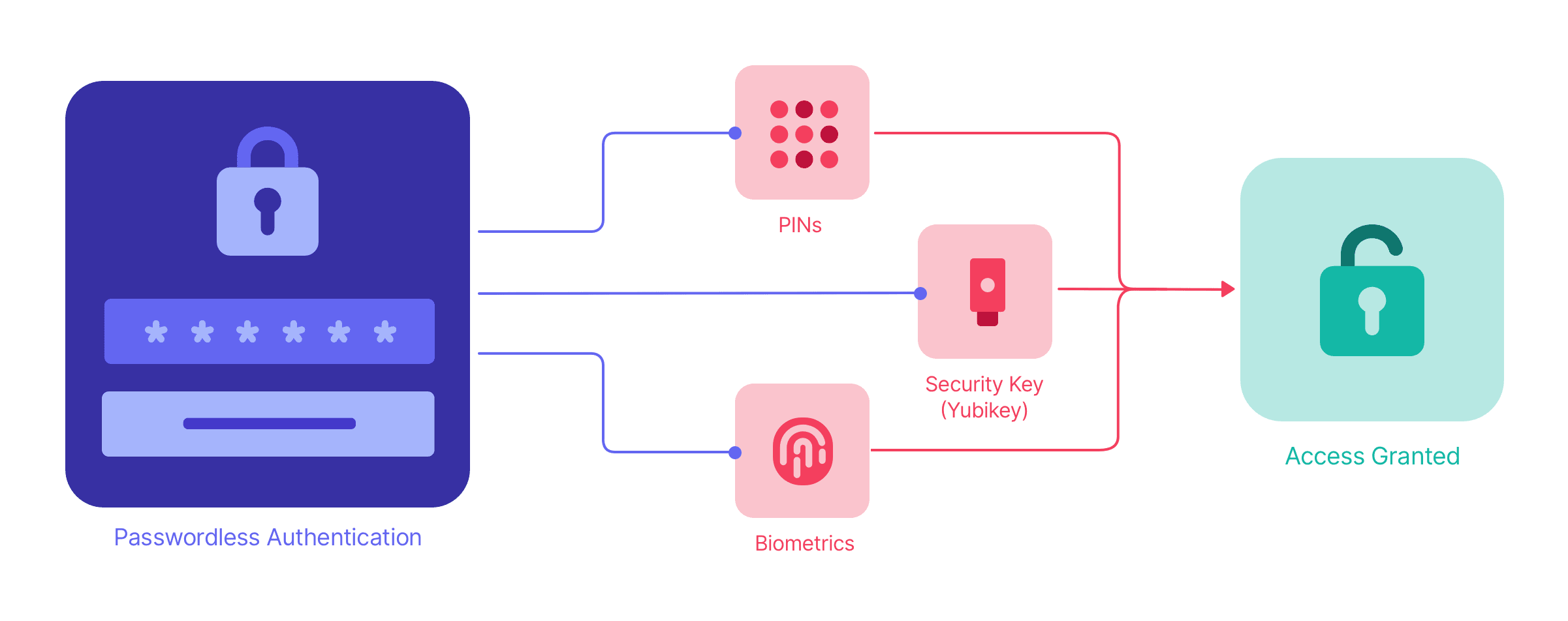Authentication
Why Passwordless Authentication Matters in the Age of WebAuthn
By Candace Werry
Password-based authentication methods have grappled with various vulnerabilities, with one of the most conspicuous being their susceptibility to phishing attacks. It’s no secret that hackers have become increasingly proficient at exploiting the weaknesses in our sensitive data. This has prompted the search for an innovative solution that will usher us into a new era of personal and web security. That solution is WebAuthn.
What is WebAuthn?
WebAuthn is at the forefront in the battle against the drawbacks of traditional authentication methods. Rooted in the FIDO Alliance’s mission for strong and passwordless authentication, WebAuthn is helping to usher in more security to an ever-evolving world of digital interactions.
At its core, WebAuthn is an API that builds upon the FIDO2 specification. It leverages several newer technologies, including biometrics and private keys, eliminating the need for lengthy passwords. With WebAuthn, we finally have a glimpse of a future where passwords are out of the equation.
Why is Passwordless Authentication Important?
The importance of moving towards passwordless authentication cannot be stressed enough. It eliminates the inherent risks associated with the username and password combinations we’re accustomed to using today. One of the largest advantages of a passwordless internet is the eradication of the common practice of reusing passwords.
WebAuthn isn’t just an innovation. It acts as a wall of protection against one of the most pervasive and damaging forms of cyber-attacks—phishing. Phishing attacks are notorious for exploiting human error, relying on deception to harvest login credentials. But WebAuthn flips the script. It safeguards against phishing by using asymmetric cryptography and eliminating passwords. Even if someone tricks you into revealing your authentication data, you’re still protected because you can’t share the key on your device. It also protects against phishing because the prompt to authenticate is tied to the domain of the website, so users are not vulnerable to Unicode domain attacks.
WebAuthn Key Components
When we look at digital security, it’s important to dive into the components that empower WebAuthn. These components are the building blocks of a safer online experience, guarding users against vulnerabilities.
Private and Public Key Pairs
At the heart of WebAuthn is the concept of the private and public key pair. This replaces traditional username / password combinations, enhancing security. The private key, securely stored on the user’s device, remains a closely guarded secret. Its counterpart, the public key, is openly accessible for authentication purposes. Together, these two components ensure only authorized users can access their accounts. It’s like having a unique, unbreakable lock and a key that only you possess.
Relying Party
The Relying Party is a central player in the WebAuthn ecosystem, representing the online service or application that relies on WebAuthn for user authentication. WebAuthn creates a secure partnership between the devices of the user and the Relying Party, making certain the user’s identity is protected. This trust in the Relying Party forms the backbone of secure, passwordless interactions, whether it’s accessing your Windows Hello-enabled Microsoft account or logging into your favorite web services through Apple’s Safari or Google Chrome.
Client to Authenticator Protocol
The Client to Authenticator Protocol serves as the communication bridge between the Browser and the authenticator device.This ensures the authentication process is seamless, and effective. Whether it’s the biometric sensors on your smartphone or a specialized security key like a Yubikey, the Client to Authenticator Protocol facilitates the exchange of information, making it possible to verify your identity with confidence.
Platform and Browser Support
Many tech giants recognize the urgency of vulnerabilities inherent in password-based authentication methods. By adopting WebAuthn, they are helping to increase both web and personal security. The support of prominent browsers like Chrome, Firefox and Edge bolsters the adoption of WebAuthn. This enhances the user experience, making passwordless authentication more accessible and convenient.

Popular Methods of Authentication
Whether consumers feel the need or not, there is a growing urgency for enhanced online security. Fortunately, some of the major players already have the methods. For instance, Windows Hello and Apple’s TouchID represent biometric solutions. Though it’s worth noting that some methods (like Windows Hello and TouchID) do allow for a PIN in place of biometric authentication.
The introduction of physical security keys like YubiKey takes multi-factor authentication to the next level. These devices enhance the security of your online accounts by requiring both something you have (the physical key) and something you know (like a PIN).
Real-world Adoption and User Experience
The adoption of WebAuthn is reshaping online security, promising users a brighter and more user-friendly experience. Companies like GitHub have successfully transitioned to using WebAuthn. With WebAuthn, users no longer need to wrestle with the frustration of password forgetfulness or worry about the vulnerabilities associated with traditional methods. Instead, they enjoy a secure and streamlined authentication process.
Taking a Look at the Future
The future of web authentication may show us that WebAuthn is poised to revolutionize the space. With the growing adoption of Near Field Communication (NFC) and Android’s incorporation of WebAuthn, the prospects for web applications and security are more promising than ever. The utilization of NFC means more devices can leverage the WebAuthn API for a more secure and convenient authentication experience, making applications not only safer but more accessible. As Android embraces WebAuthn, we may see a significant shift towards stronger authentication methods, setting the stage for a future where passwords are on the back burner.
WebAuthn stands not only as a safer alternative to traditional authentication, but as a more convenient one as well. Integration with modern platforms and browsers, coupled with adoption by leading companies emphasizes the potential in shaping the future of authentication.

